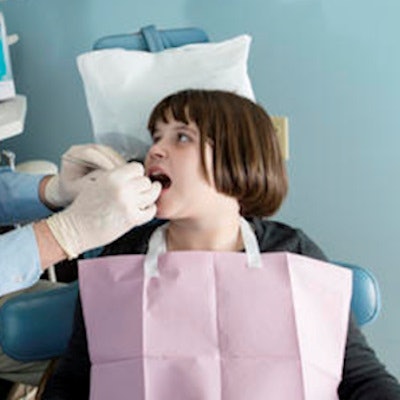
Dental care is the most unmet healthcare need among people with a disability, according to a recent study published in the Journal of the American Dental Association. About 25% of the U.S. population has a disability that hinders their function and independence.
Adults with disabilities face disproportionate challenges in accessing dental care, the study noted. Challenges in accessing care can contribute to decreased health outcomes, which can further cause increased disability, increased healthcare costs, and decreased quality of life (JADA, May 5, 2022).
The authors focused their study on people with disabilities in general and those with intellectual, acquired, or developmental disabilities (IADDs). IADDs are characterized by limitations in intellectual functioning and adaptive behavior and are associated with poor oral health status and outcomes. Adults with IADDs have up to a 92% prevalence of periodontal disease and up to 73% prevalence of edentulism.
While oral health status for adults with disabilities and IADDs have been well documented, the root causes for the disparities are not well understood. Researchers evaluated the association between disability status and oral healthcare use, with a special focus on adults with IADD diagnoses.
The study authors assessed the association between disability status and dental care use by using the 2018 U.S. National Health Interview Survey. They evaluated the association between IADD status and oral healthcare use within two years by assessing population-based access to oral healthcare and the relationship of disability status with dental care use.
Adults with an IADD were 2.29 times as likely to have had no dental visit in the past two years compared to adults with no disabilities. Adults with other disabilities were 1.5 times as likely to have had no visit.
An IADD diagnosis had significant associations that limited a person's function and independence, thus hindering their oral healthcare. Compared to adults with other disabilities or no disabilities, adults with IADDs are less likely to visit a dentist.
The findings of this study are consistent with previous studies assessing the barriers that impact dental care for adults with disabilities. The study authors urge dental professionals to use their study to better understand the implications of an IADD diagnosis on oral healthcare use and to make efforts to facilitate care for these patients.
One factor that might improve dental care for this cohort is reducing cost barriers. In the study, oral healthcare use for people with IADDs was not statistically different from adults with other disabilities when only accounting those who cannot afford oral healthcare.
Adults with IADDs are often insured through Medicaid, which typically has limited dental providers, reducing the likelihood of people with disabilities receiving necessary dental care. Without accepted insurance, patients with disabilities may not be able to cover out-of-pocket costs, the authors noted.
"The disproportionate barriers to oral healthcare for adults with IADDs, especially those covered via Medicaid, could be improved with more closely integrated medical and oral healthcare," the authors wrote.



















